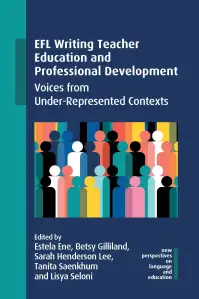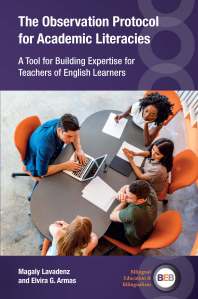This month we published Redoing Linguistic Worlds edited by Kris Aric Knisely and Eric Louis Russell. In this post the editors explain why the book is so necessary.
 Has anyone ever told you that the way you language is “wrong”? That it “doesn’t exist”? That “you can’t” do or say or sign something in the way that you have? And, yet, here you are, speaking, writing, signing – doing language in those ways. As a languager – someone doing any form of linguistic activity – you are existing, shaping your world, and sharing that world with others (even if some of those people attempt to use claims to linguistic authority and power to suggest that you are not).
Has anyone ever told you that the way you language is “wrong”? That it “doesn’t exist”? That “you can’t” do or say or sign something in the way that you have? And, yet, here you are, speaking, writing, signing – doing language in those ways. As a languager – someone doing any form of linguistic activity – you are existing, shaping your world, and sharing that world with others (even if some of those people attempt to use claims to linguistic authority and power to suggest that you are not).
The kind of language pedantry that would suggest that anyone’s language is impossible or wrong is not new. Language is always a site of contestation, controversy, expansion, and tension. Language seems to always stir up these kinds of attitudes about what can and cannot (or what should and should not) be. We live with language attitudes and, often, we accept them as more palatable covers for racism, classism, sexism, cissexism, binarism, and other oppressive systems.
Why? What are these attitudes doing in our worlds and what’s behind them? Frequently, language attitudes are used as a tool to constrain and conserve, as a part of futile attempts to circumvent a core truth: Language is always changing, in large part because the linguistic doings, redoings, and undoings of languagers are very real ways of expressing how they understand their worlds. And like the individuals and collectives that inhabit them, these worlds are always shifting.
With Redoing Linguistic Worlds we – and our contributors – ask: What happens when we undo and reimagine gender and language together? What happens when we move beyond cislingualism (i.e. the intersection between normative ideas about language and about gender modality that center and value cisgender positionalities and ways of doing language)? In what ways is this about a movement past gender binarism (i.e. the idea that gender is a man/woman binary)? How does this open up possibilities for moving past other binarities (e.g. gender modality as a trans/cis dichotomy)? Where and in what ways is this about an expansion of gender? When is it about fluidizing – a blurring of the very concept that people can, might, or should be gendered in any way? How might it be about expanding, fluidizing, burning down, and reimagining all at once?
For those of us whose genders exist beyond normative frames, these questions are evidently bound up in the ways that we experience our worlds and the languaging through which they are constantly remade; these questions are the intellectual exploration of our lives and linguacultures. For others of us – those who sit more comfortably within dominant frames for doing language and gender – these questions may appear less salient, less obligatory; they are not about our own self-understandings, but a means of respecting and honoring those of others. Yet, it is a fallacy to think that we are not all involved in this change-in-progress: When someone engages singular they or xe or any form that expands their linguistic world, they ask others –directly or indirectly – to also expand their own.
If you’re reading this blog post, these are perhaps lackluster examples – you undoubtedly are familiar with such expansions in Anglophone settings – but what of other linguacultural spaces? What does this “redoing the world through redoing languaging habits” look like for others, especially in communities in which gender markings are done more extensively than in English, such as those deploying canonically-labelled masculine and feminine forms? How are languagers remaking the linguistic world through German, Spanish, French, or Italian?
We began this project with the observation that there is relatively little attention given to these linguacultural contexts and their inhabitants – and that what has been given is often rendered through an appropriating, approximating lens. Rather than simply calque understandings of Anglophone patterns onto those of other languaging ecosystems, or map cislingual frames onto communities that reject these, we wanted to understand these from within. And hence Redoing Linguistic Worlds was born.
This volume, the first of its kind to our knowledge, brings into conversation scholars working on how people do language and gender together in French, German, Italian and Spanish. Each of the chapters takes a different perspective – some focusing on classroom pedagogy and teaching practices, others on empirical data from various languagers, still more taking ethnographic approaches to the question of how redoing is accomplished, how it affects the lives of languagers and what any redoing means, individually and collectively. We’re thrilled to see these works be made available to the public – and to participate in the conversations that they engender, wrestle with the questions they ask, and attend to the perspectives they manifest.
We join with many of our colleagues (both those who are a part of this volume and those working beyond its purview) to assert – as the late John Henner so directly and perfectly stated: “How you language is beautiful. Don’t let anyone tell you your language is wrong. Your languaging is the story of your life.” With Redoing Linguistic Worlds we begin to sketch the contours of these beautiful linguistic worlds that are undone, reimagined, and remade when the infiniteness of language meets that of gender.
(Spoiler alert: These infinite galaxies cannot be contained in one volume – We are already formulating the next volume, in which we hope to continue to expand the conversation past well-trodden spaces. We invite any, but especially those working in “less commonly studied” linguacultures and among their languagers, to contact us for more information.)
For more information about this book please see our website.
If you found this interesting, you might also like Reimagining Dialogue on Identity, Language and Power edited by Ching-Ching Lin and Clara Vaz Bauler.
 Spurred by social justice movements of the late 2010s, American businesses and universities instituted a range of diversity, equity and inclusion (DEI) policies aimed at promoting employment and educational opportunities for historically marginalized groups. Now, in the spring of 2024, DEI is increasingly criticized and eliminated as perfunctory, ineffective, and even unequitable. Our volume is in part curated to counter this dangerous narrative by demonstrating that diversity, equity and inclusion are not mere “buzz words” touted in abstract and controversial policies. They are, instead, deeply relevant human concerns that permeate mundane moments of everyday life.
Spurred by social justice movements of the late 2010s, American businesses and universities instituted a range of diversity, equity and inclusion (DEI) policies aimed at promoting employment and educational opportunities for historically marginalized groups. Now, in the spring of 2024, DEI is increasingly criticized and eliminated as perfunctory, ineffective, and even unequitable. Our volume is in part curated to counter this dangerous narrative by demonstrating that diversity, equity and inclusion are not mere “buzz words” touted in abstract and controversial policies. They are, instead, deeply relevant human concerns that permeate mundane moments of everyday life.






